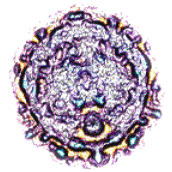Breast cancer deaths have fallen sharply, and anti-cancer drug tamoxifen has been given the credit for much of this.
The drug, first developed in the UK, is cheap and helps prevent the cancer coming back after the initial surgery to remove a tumour.
How Does Tamoxifen Work?
Tamoxifen blocks the female sex hormone oestrogen. The hormone influences the growth of cells related to female reproduction, such as those in the breast or the uterus.
How Does Tamoxifen Work?
Tamoxifen blocks the female sex hormone oestrogen. The hormone influences the growth of cells related to female reproduction, such as those in the breast or the uterus.
If there is too much oestrogen in the system, cell growth can accelerate to the point where tumours start to develop. Tamoxifen competes with the sex hormone for the same proteins - called receptors - found on the surface of cancer cells. When the drug locks onto the receptors it blocks the way for oestrogen - which would otherwise activate the cancer cell to divide and make the tumour grow.
How Is The Tamoxifen Drug Used?
Tamoxifen, known in the trade as Nolvadex, is usually prescribed by specialists in breast cancer and is taken in pill form. A patient will stay on the drug for about five years.
How Is The Tamoxifen Drug Used?
Tamoxifen, known in the trade as Nolvadex, is usually prescribed by specialists in breast cancer and is taken in pill form. A patient will stay on the drug for about five years.
Often the woman's cancer will be tested to see if it is sensitive to the amount of oestrogen in the system. If the cancer is oestrogen sensitive, tamoxifen will be given.
Just How Effective Is Tamoxifen?
Tamoxifen was first used to fight breast cancer at the Christie Hospital in Manchester, England, in 1969. It has since proved its worth as means of stopping the spread or recurrence of the disease in women who have already been treated for it.
But, it was noticed back in the early 1980s that some women who were receiving the drug for cancer in one breast did not develop any tumorous growth in the other. This prompted the suggestion that Tamoxifen might have another preventative role for those women who are at risk of getting breast cancer but have yet to develop any signs of the disease.
Who Is Regarded As Being At High Risk?
Tamoxifen studies have looked at three major categories of women at high risk:
women aged over 60, those with breast cancer in the family and women with pre-cancerous breast abnormalities.
What Have The Trials Shown?
A US study of 13,000 patients showed Tamoxifen reduced the rate of expected cancers from one in 130 to one in 236 - a cut of about 45%. The American researchers ended their trial early when they said the drug's benefits became overwhelmingly obvious.
This prompted doctors behind a parallel study in Europe to criticise the decision, arguing it undermined efforts to get information on the long-term effects of taking Tamoxifen. It is possible that the cancers were just delayed rather than prevented; the drug may not work for certain sub-groups of women; and the halting the study early may impede efforts to get a clear picture of the risks of taking Tamoxifen.
Tamoxifen Side Effects?
Women who take Tamoxifen run an increased risk of getting uterine cancer - about two to three times the normal incidence of the disease. The drug may also induce symptoms similar to those of the menopause, such as hot flushes.
Other common side effects include vaginal dryness, irregular periods and weight gain. But experts stress that all the studies done on the drug so far show that the benefits far outweigh the disadvantages.
Are There Any Other Benefits?
Although Tamoxifen is an oestrogen inhibitor in breast tissue, it does behave as a weak oestrogen in other parts of the body. This means it can work like oestrogen replacement therapies and protect the patient against osteoporosis - the brittle-bone condition that affects many post-menopausal women.
Are There Any Other Benefits?
Although Tamoxifen is an oestrogen inhibitor in breast tissue, it does behave as a weak oestrogen in other parts of the body. This means it can work like oestrogen replacement therapies and protect the patient against osteoporosis - the brittle-bone condition that affects many post-menopausal women.

















No comments:
Post a Comment